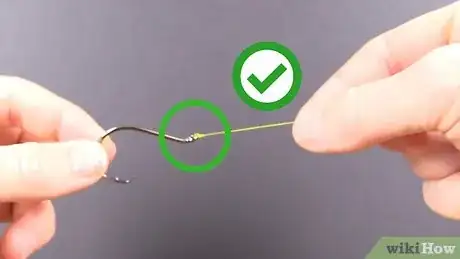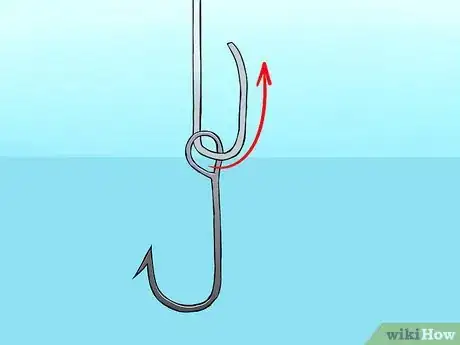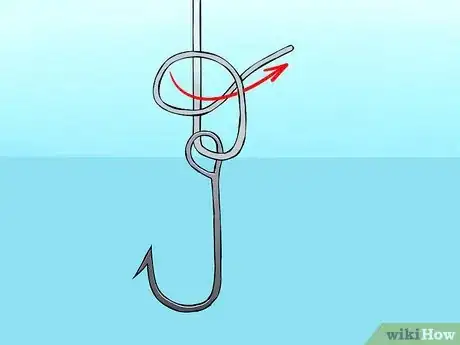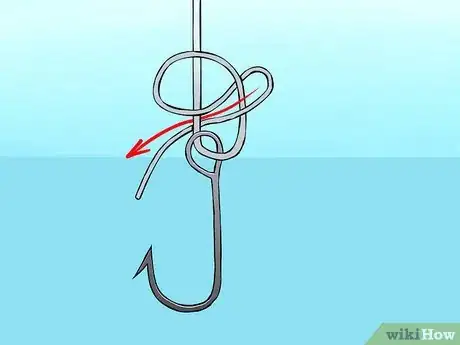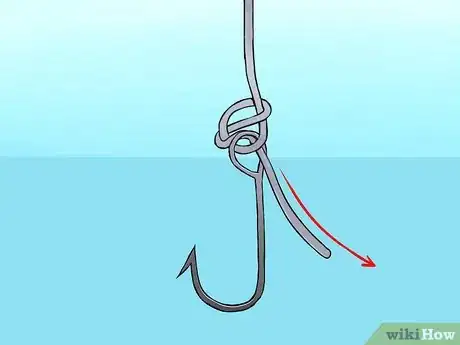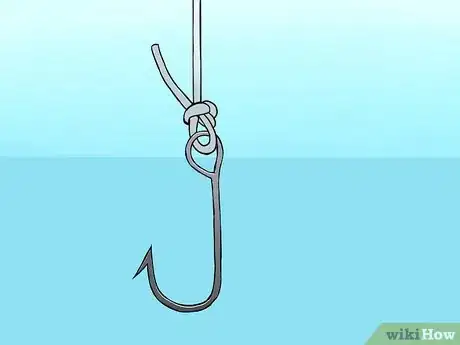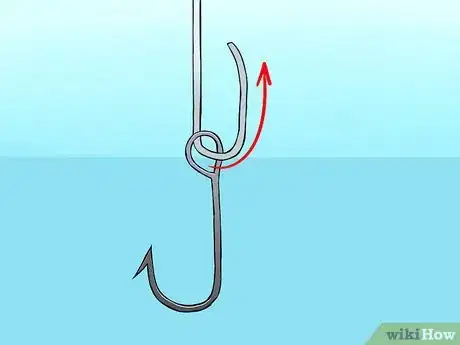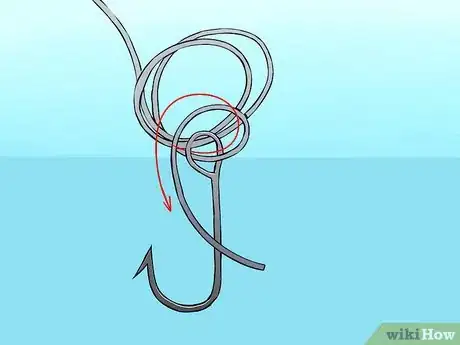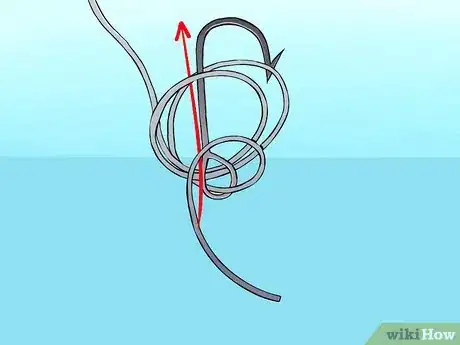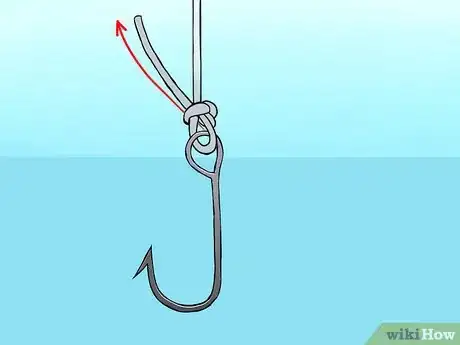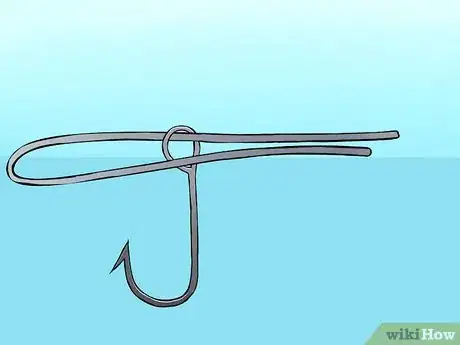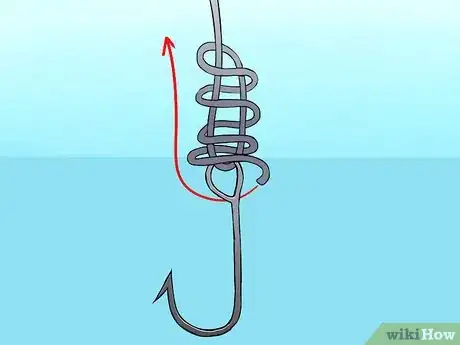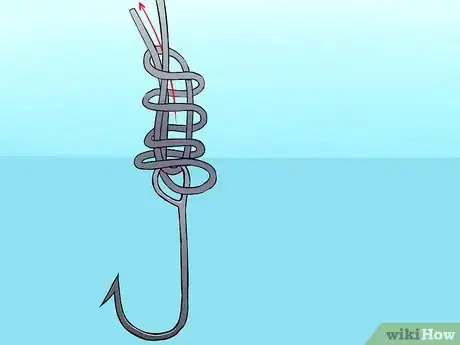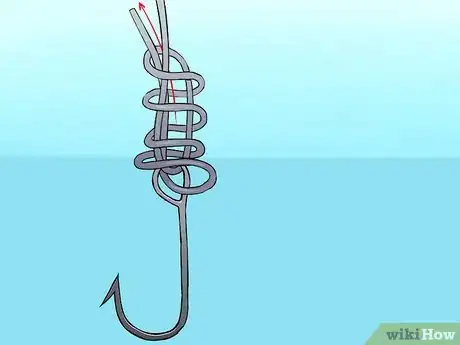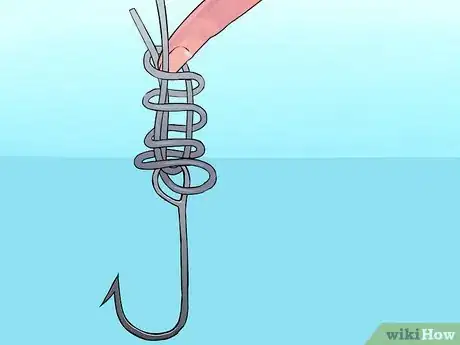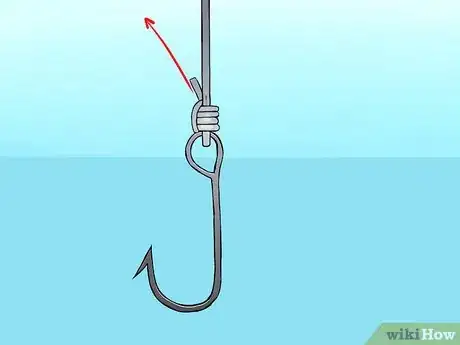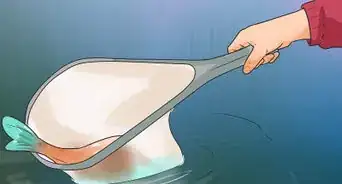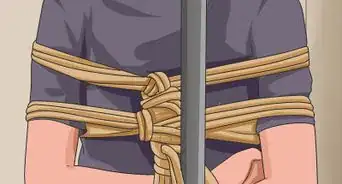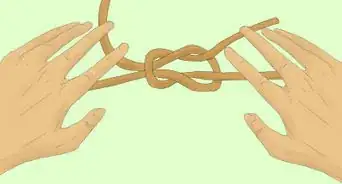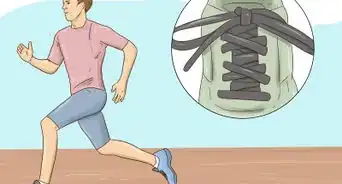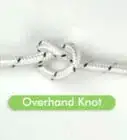This article was co-authored by Michael Reynolds. Michael Reynolds is a Professional Fishing Instructor and the Owner of Long Beach, California Fishing Lessons by Michael Reynolds. In his over 40 years of fishing experience, Michael has become very knowledgeable about the variety of fishing methods and techniques. He is passionate about sharing his knowledge with beginners to experienced anglers. Michael has been guiding and teaching fishing for over five years and is licensed and bonded with the Department of Fish and Wildlife (DFW).
wikiHow marks an article as reader-approved once it receives enough positive feedback. In this case, several readers have written to tell us that this article was helpful to them, earning it our reader-approved status.
This article has been viewed 681,140 times.
Fishing is one of the greatest pastimes ever created. Nothing quite compares to enjoying the crisp early morning air by the water's edge, throwing your line out, and seeing the sunlight sparkle as the lure hits the water. A short time later, your line tugs, and after a few minutes of work, you reel in a 20 pound lake trout. To make sure that lure lasts through the struggle, you need to tie a good knot. While landing the fish is up to you, we will show you how to tie a hook or a lure onto a fishing line.
Steps
Clinch Knot
-
1Use the clinch knot as your go-to fishing knot. The clinch knot is probably the most popular fishing knot. That's because it's simple to tie, easy to remember, and holds its weight in durability. Use the clinch line for everyday fishing knots.
-
2Insert the line. Thread the end of the fishing line through the eye of the hook.Advertisement
-
3Wrap the line. Wrap the end of the line around the line (going back to the reel) four to six times.
-
4Make the knot. Pass the end of the line through the loop that you created in step one.
- Improve the clinch knot by feeding the line through the loop that was created in the last step. This is called an "improved clinch knot."
-
5Pull it tight. A little moisture here helps a lot. Wet it in your mouth to provide some lubrication.
-
6Clip off the excess line above the knot. Leave only about 1⁄8 inch (0.3 cm) or so.
Orvis Knot
-
1Use the Orvis knot as a strong and easy alternative to the clinch knot.[1]
-
2Thread the hook. Pass the line through the hook eye from below.
-
3Form a figure eight by crossing the standing line and threading the end back through the first loop formed.
-
4Feed the tag end through top of second loop, then repeat for a send pass through the loop.
-
5Finish the knot. Lubricate the line, then pull the tag end tight to close knot. Trim the tag end.
Palomar Knot
-
1Use the Palomar knot if you want the best knot to use with braided fishing line.[2] The Fastest, Easiest, and Strongest Knot to tie is the Palomar Knot. The Palomar can look pretty tricky, but once it's mastered, it's close to being a perfect knot. It doesn't take much time to perfect, either.
-
2Double six inches of line and pass the doubled line through the eye of the hook.
-
3Create a simple overhand knot with the doubled line. Make sure the hook is hanging at the bottom of the line.
-
4Slide the doubled line under the hook and back up, above the eye of the hook.
-
5Tighten by pulling on both the standing line as well as the tag end. Clip off the tag end.
Davy Knot
-
1Use the Davy knot for small flies. The Davy knot is commonly used among fly fishermen who want a quick, simple, unobtrusive knot to tie small flied with. The Davy knot will get you back fishing in no time if you happen to break a line.
-
2Thread the line through the eye of the fly hook.
-
3Form a loose overhand knot with the end of the line.
-
4Bring the end of the line back over and through the overhand knot and the hook itself.
-
5Tighten the knot by pulling on the end of the line.
Baja Knot
-
1Use a Baja knot for heavier mono line. It can be used for loop-to-loop connections or for tying hooks or other tackle to the line. The knot needs to be set pretty firmly after being tied, after which it won't slip.
-
2Make the first loop. Create a simple loop about two inches from the end of the line.
-
3Slide a hook onto the base of the loop, and let it hang freely while you tie the rest of the knot.
-
4Make the second loop. Place the end of the line across the front of the first loop, behind the running line. Pull the line until this second loop is a bit smaller than the first.
-
5Make a third loop by repeating the previous step. Adjust it so that it's in between the large loop and small loop.
-
6Slide the hook to the top of the first loop. Then, pass it over the middle loop and back up under top loop. Tighten the knot a bit.
-
7Finish the knot. Secure the hook with pliers, and pull the line hard to tighten the whole rig.
Pitzen Knot
-
1Use the Pitzen knot for incredible strength. The Pitzen knot, also known as the Eugene Bend or 16-20 Knot, is known to hold up to 95% of the line's breaking strength. It's a little tricky, but it's worth it.
-
2Thread a line through the eye of the hook.
-
3Loop the tag line back under the standing line.
-
4Using your index finger as a stop, hook the line around the finger.
-
5Wrap the line back around the paralleled lines four times.
-
6Pass the tag end back through the small loop created by your finger.
-
7Tighten the knot by sliding the knot down to the eye of the hook. Do this with your fingers, not by pulling the standing line.
Community Q&A
-
QuestionSometimes fish eat my bait and go. Any tips?
 Community AnswerUse smaller hooks as well as thinner line, such as 15-20 lbs. As soon as you feel a bite on your line, drop your hook to give the fish more line, and then give it a yank to set the hook.
Community AnswerUse smaller hooks as well as thinner line, such as 15-20 lbs. As soon as you feel a bite on your line, drop your hook to give the fish more line, and then give it a yank to set the hook. -
QuestionI usually tie a bunch of normal knots. Will that work?
 Community AnswerActually, one of the best knots out there, is the Palomar knot. This knot doubles the line strength at the point of tie off, unlike square knots. It's very easy to do a Palomar knot. There's info on it, online.
Community AnswerActually, one of the best knots out there, is the Palomar knot. This knot doubles the line strength at the point of tie off, unlike square knots. It's very easy to do a Palomar knot. There's info on it, online. -
QuestionCan I use a knot like I use to tie my shoes?
 Community AnswerThat wouldn't be ideal. The knot wouldn't be fully secure and since the fishing line is so small, it would make it much more difficult to tie that way. It could also cause the line to snap.
Community AnswerThat wouldn't be ideal. The knot wouldn't be fully secure and since the fishing line is so small, it would make it much more difficult to tie that way. It could also cause the line to snap.
Warnings
- When fishing, keep your fishing license with you; if not you can get in trouble with the park rangers.⧼thumbs_response⧽
- The hooks are very sharp; avoid contact with your eyes or other skin, or other body parts.⧼thumbs_response⧽
References
About This Article
To tie a clinch fishing knot, first thread the end of your fishing line through the eye of a hook and curve it into a loop. Then wrap the end 4-6 times around the rest of the line, going toward the reel but leaving some line free. Next, pass the end of the line that’s still free through the loop and pull it tight to make a knot. Finish the knot by clipping any extra line above it to about 1/8 of an inch. To learn how to tie other fishing knots, like the Palomar or Davy knot, scroll down!
